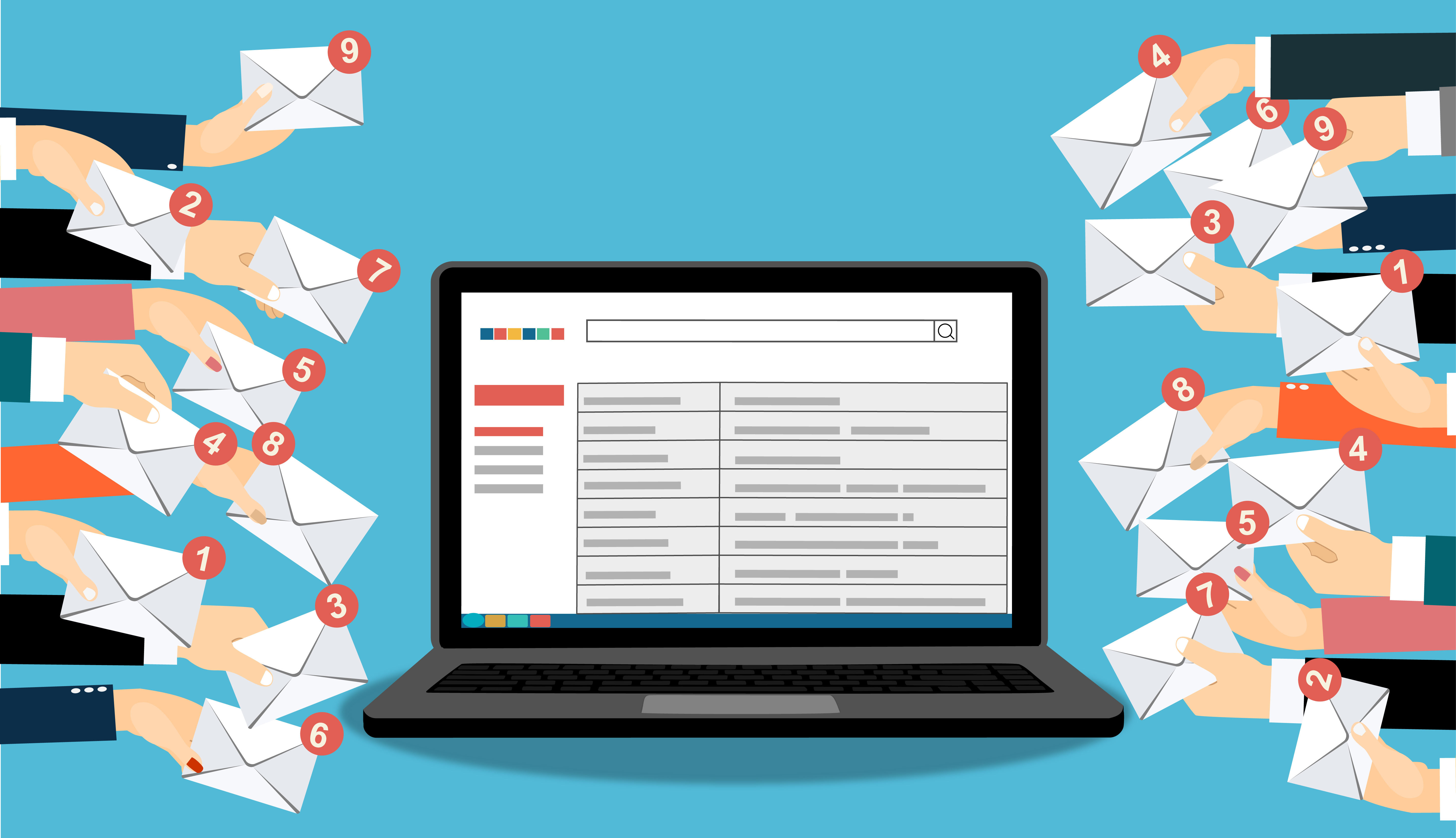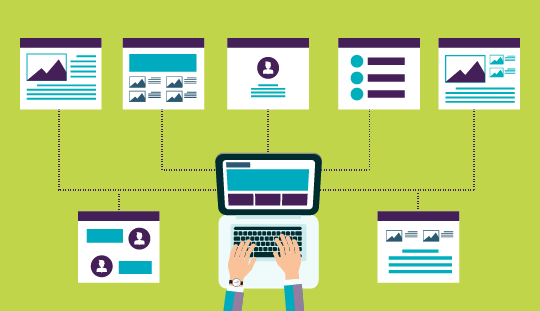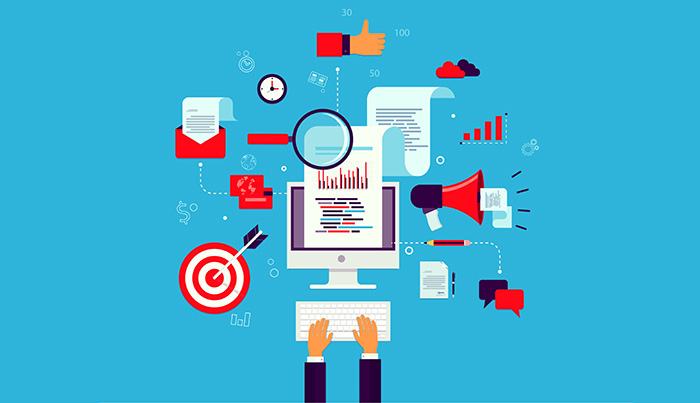4 min read
Marketing Automation: Where Evolution and Revolution Collide
We are all being asked to accomplish greater results with fewer resources. Marketing is no exception. There is one way to accomplish such a feat and...

It’s hard to believe, but email marketing has been around nearly a quarter-century. Despite the flashy technologies and social platforms that have popped up within the last decade and the complaints of overcrowded inboxes, email marketing isn’t going away—at least not anytime soon.
According to GetResponse, email marketing is the most effective technique for digital marketers as compared to social media, SEO, and direct mail. Constant Contact puts email open rates as high as 71 percent on desktop computers and up to 53 percent on mobile devices. If you need further proof of email marketing’s prowess, consider a Salesforce study that states the average return for every dollar invested in email marketing is $38 (that’s an ROI of 3800%).As technology continues to advance, the future of email marketing is looking even brighter. To help you make the most of it in the year ahead, here are the top five email marketing trends for 2019.
1. Focus on the Mobile Experience
Email messages must be properly formatted for viewing and readability on a mobile device. In a survey conducted by Campaign Monitor software, 52 percent of respondents said they wouldn’t engage with a company if they had a bad mobile experience. If the email isn’t properly formatted, the recipient is likely to hit “delete.”
Here are a few reminders: The email copy, images, and graphics must fit within the screen and be readable without horizontal scrolling. Text should be presented in small “bite-sized” chunks—versus long paragraphs—to be easily read on a mobile device. Finally, use a responsive email template to ensure everything is properly sized.
Remember, you have just three seconds to capture the reader’s attention or “poof” – your email is in the trash.
2. Add Personalization
If you want more people to open and read your email messages, personalizing them will significantly increase your open rates. Instead of sending an email that reads "Hello, Client" or, worse yet, no salutation whatsoever, use the personalization feature to address the client or recipient by name (Hello, Christine). Studies have shown that adding personalization within the Subject Line helps, as well.
The major e-marketing software systems (MyEmma, Constant Contact, Mail Chimp, etc.) allow personalization with a simple click or two. Personalization captures the reader’s attention and makes the experience more, well, personalized.
There’s really no excuse NOT to add personalization.
3. Leverage Transactional Emails
Transactional emails are generally triggered by a specific purchase activity. These may include order notifications, shipping notices, abandoned cart emails, password reminders, purchase confirmations, and product notifications, to name a few. Because the client knows they placed an order, or that they engaged with you in a way that would solicit a response, transactional emails are opened more frequently than other types of email. For professional service firms, this could be completing a form on your website or uploading documents to your portal.
However, transactional emails are a missed opportunity. In addition to confirming the transaction or interaction in your message, include another piece of relevant content or content about a related service. For example, you could include an educational attachment or add a link to a podcast, video, how-to guide, checklist, or an article.
As an added marketing tactic, consider including verbiage that lets clients know about referral incentives. Referral marketing is very powerful and can be even more so when it's combined with a transactional email.
An easy place to start is to identify how clients interact with your firm and the messages included in any auto responders. Leverage every opportunity.
4. Enhanced Segmentation
An individual is more likely to open and engage with an email if the message aligns with the individual’s particular interests. Segment email messages based on services rendered, demographics, geographic region, previous email engagement such as open and click-through rates, website behavior, etc. Then, create a matrix that aligns content to the various segments. Taking the time to segment your list and content will be more effective than a bulk message that certain recipients may not find of interest.
People want information that is of interest to them. Segmentation is also a great way to uncover upsell / cross sell opportunities. If the content isn’t relevant, the countdown begins (1, 2, 3, delete). [See #1 if you miss the reference.]
5. Interactive Content
Industry researchers predict that interactive content, such as games, puzzles, quizzes, and other fun, clickable content, will soon be a trend. Why? Interactive email content gives recipients a way to engage with your brand without leaving the email itself. By educating and entertaining recipients, it can also help to boost sales. This tactic could also make your clients and prospects more likely to open future emails.
As Millennials move into decision making positions, it makes sense that using gamification techniques will be more the norm. However, like most things technology-driven, the process of enhancing email content with interactive content should be easier over time. Look for an uptick in apps that allow for easy integration. Perhaps firms should add interactive content in emails sent to prospective employees.
The Bottom Line
Email marketing will remain a relevant tactic for the foreseeable future. Taking note of these five trends can help your firm make the most of your email marketing efforts. Even better, find a way to put your own unique spin on an existing email trend, and make 2019 the year your firm stands out in a crowded inbox—and in a crowded marketplace.
The Hollinden Point of View brings you monthly insights tailored to helping you grow your firm.

4 min read
We are all being asked to accomplish greater results with fewer resources. Marketing is no exception. There is one way to accomplish such a feat and...

The latest buzz in marketing is around the idea of agile marketing. However, there is still a lot of confusion about the concept and how to apply it....

Developing a holistic approach to marketing allows firms to align their efforts and achieve their goals. One such approach is to create a strategic...